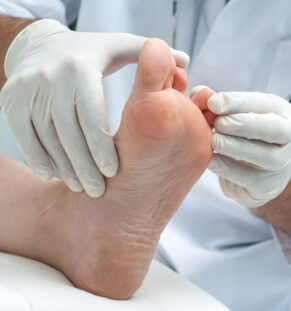

Dermatology
What is Athlete’s foot?
How is Athlete’s foot diagnosed?
Athlete’s foot is a common fungal (caused by a fungus) infection. Athlete’s foot is a form of ringworm. Tinea pedis is another name for athlete’s foot. Tinea is another name for ringworm, and pedis means foot or feet. Athlete’s foot causes an itchy, stinging, burning rash on the skin on one or both of your feet. Athlete’s foot is most common between your toes, but it can also affect the tops of your feet, the soles of your feet and your heels.
Our doctors can typically diagnose athlete’s foot by examining your feet and reviewing your symptoms.
Details of Athlete’s foot
How is Athlete’s foot treated?
Athlete's foot rarely goes away on its own. If left untreated, it is likely to spread to other parts of your body. You should consult our doctors for care and treatment.
Book an appointment now to see the difference for yourself.
F&Q
People also ask
How long does it take for athlete's foot to go away?
How Long Does Athlete's Foot Last? Most mild cases of athlete's foot clear up within 2 weeks. But treatment can go for several weeks or longer if the infection is more serious or affects the toenails.
How serious is athlete's foot?
Athlete's foot is a type of fungal skin infection. Fungi (the plural of fungus) are microscopic organisms that thrive in damp, warm environments. They're usually not dangerous, but sometimes can cause disease. When they infect the skin, they cause mild but annoying rashes.

